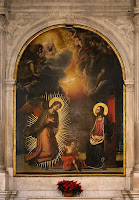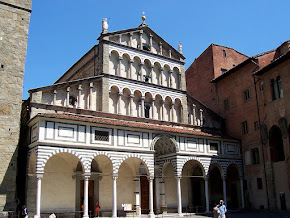Claudio Ranieri - football manager
Title-winning Leicester City boss
Football manager Claudio Ranieri was born on this day in 1951 in Rome. Ranieri, who won the English Premier League in 2016 with rank outsiders Leicester City, has managed 21 clubs in four countries in a 37-year career in coaching. He also had a stint in charge of the Greece national team. Among the teams he has coached are a host of big names - Internazionale, Juventus, Roma, Napoli and Fiorentina in Italy, Atletico Madrid and Valencia in Spain, Monaco in France and Chelsea in England. He has won titles in lower divisions as well as Italy's Coppa Italia and the Copa del Rey in Spain but until Leicester defied pre-season odds of 5,000-1 to win the Premier League, a major league championship had eluded him. He had finished second three times, with Chelsea, Roma and Monaco. Before turning to coaching, Ranieri was a player for 14 seasons. He began in Serie A with home-town club Roma, but enjoyed more success in the lower divisions, enjoying promotion twice with the Calabrian club Catanzaro, where he spent the biggest part of his career, and once each with the Sicilian teams Catania and Palermo. Read more…
_______________________________________
Jacopo della Quercia - sculptor
Innovative work said to have influenced Michelangelo
The sculptor Jacopo della Quercia, regarded as one of the most original artists in his field in the early 15th century and an influence on a number of leading figures in the Renaissance including Michelangelo, died on this day in 1438. Della Quercia’s most notable works include the Fonte Gaia in Piazza del Campo in Siena, the sculptures around the Porta Magna of the church of San Petronio in Bologna, the tomb of Ilaria del Carretto in Lucca Cathedral, and Zacharias in the Temple, a bronze relief for the baptismal font in the church of San Giovanni in Siena. His attention to proportion and perspective gave his creations a particularly lifelike quality and his innovative work put him at the forefront of his generation. Art historians consider that his work marked a transition in Italian art from Gothic to Renaissance style that was taken forward by Michelangelo and contemporaries such as Francesco di Giorgio and Niccolò dell’Arca. Born, it is thought, in 1374, he was baptised as Jacopo di Pietro d’Agnolo di Guarnieri. He took his working name from his home village, Quercia Grossa - now Quercegrossa - situated a few kilometres outside Siena. Read more…
______________________________________
Mara Venier - television presenter
Former actress became famous as face of Sunday afternoon
Mara Venier, a familiar face on Italian television for more than 35 years, was born on this day in 1950 in Venice. The former actress, who made her big-screen debut in 1973, is best known for presenting the long-running Sunday afternoon variety show Domenica In, which has been a fixture on the public TV channel Rai Uno since 1976. Venier, born Mara Povoleri, hosted the show for nine seasons in four stints between 1993 and 2014. Only Pippo Baudo, something of a legendary figure in Italian television, has presented more editions. Fronting Domenica In, which was on air for an incredible six hours, was not only a test of stamina for the presenter but came with a huge sense of responsibility. In fact, holding the attention of the viewers was a patriotic duty, the show’s format having been conceived by the Italian government, faced with the global oil crisis in the 1970s, as something to tempt citizens to stay at home rather than use precious fuel for their cars. Venier had been a movie actress, known largely to audiences in Italy, for two decades before she was invited to host Domenica In. Read more…
_____________________________________
Dado Moroni - jazz musician
Self-taught pianist recorded first album at 17
The renowned jazz musician Edgardo ‘Dado’ Moroni was born on this day in 1962 in Genoa. Moroni, who learned at the feet of some of the greats of American jazz music in Italian clubs in the 1980s and 90s, has recorded more than 25 albums, having released his first when he was only 17. He has appeared as a guest on many more albums and built such a reputation as a pianist and composer that he was able to become part of the American jazz scene himself in the 1990s, when he lived in New York. Moroni attributes his love of jazz music to his father’s passion for the genre, which meant that he grew up listening to the likes of Earl Hines, Fats Waller and Count Basie. Using a piano his parents had bought for his sister, Monica, he taught himself to play many of the songs he heard on the record player, receiving his first informal tuition from his mother, who played the accordion. Formal piano lessons were arranged for him with the Genoa jazz pianist Flavio Crivelli, who introduced him to the music of Charlie Parker, Bud Powell and Dizzy Gillespie and contemporary pianists like Bill Evans, Ahmad Jamal and Oscar Peterson. Read more…
_______________________________________
Book of the Day: Hail, Claudio!: The Manager Behind the Miracle, by Gabriele Marcotti and Alberto Polverosi
Leicester City's Premier League victory was the 5,000-1 triumph that delighted the world. But how did Claudio Ranieri pull off one of the greatest achievements in sport? This is the inside story of the rise and rise of the butcher’s son from Rome, whose hard work, passion for the game and ability to learn from his mistakes have earned him the respect of players, fans and owners worldwide. Gabriele Marcotti and Alberto Polverosi have known Claudio Ranieri since his early days as a professional footballer. They have closely followed his successes and his failures as he navigated the often topsy-turvy world of football and developed as a player and manager. Hail, Claudio! takes an in-depth look into what sets Ranieri apart as a manager, into precisely how the Premier League was won, and what went wrong following that golden season.Born in Italy and now living in London, Gabriele Marcotti has written for ESPN, The Times and Corriere dello Sport. His previous books include The Italian Job: A Journey to the Heart of Two Great Footballing Cultures, shortlisted for the William Hill Sports Book of the Year Award, and Capello: Portrait of a Winner. Alberto Polverosi was born in Montelupo Fiorentino, Tuscany and has been writing for Corriere dello Sport since 1977. He has covered eight World Cups and seven European Championships. He lives in Florence.
.jpg)
.jpg)

.jpg)



.jpg)



.jpg)

.jpg)


.jpg)

.jpg)
_-_Mario,_Giovanni_Matteo_(1810-1883),_tenore_2a.jpg)







.jpg)







